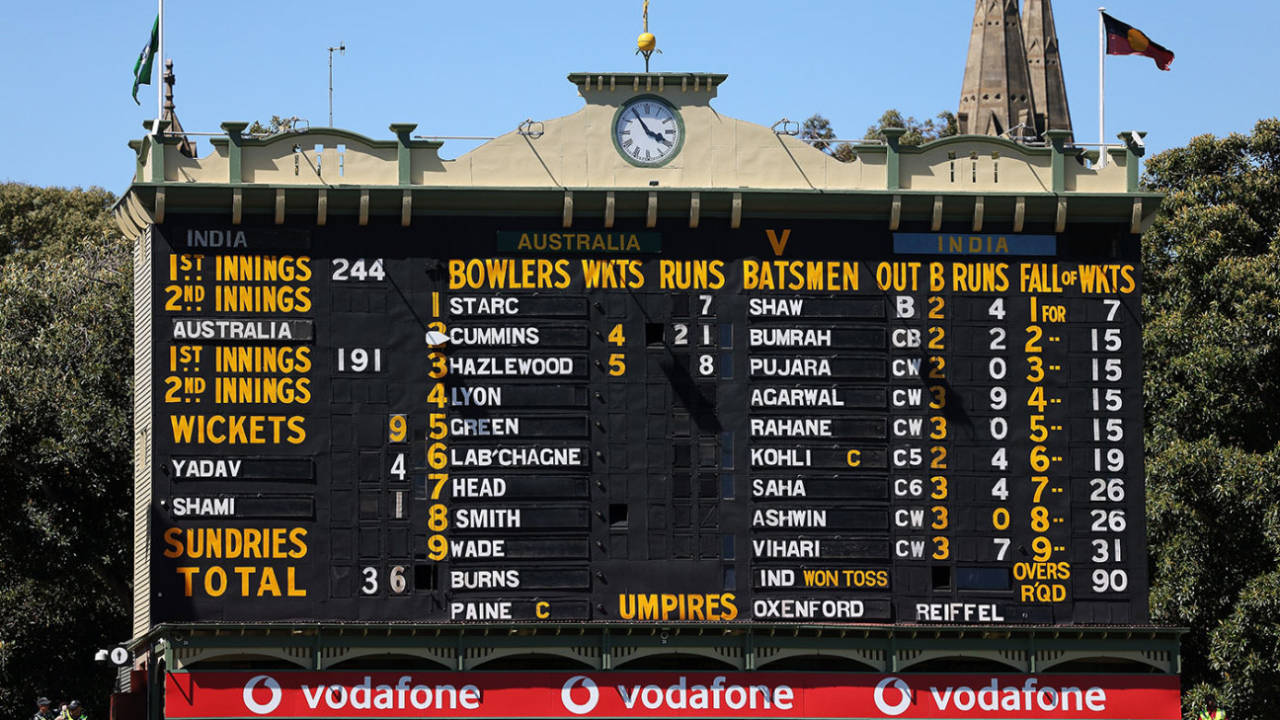Is India's 36 the first Test innings not to include a double-digit score?
And which player has had the longest wait for a second ODI appearance?
Mayank Agarwal had the highest individual score in India's second-innings collapse, with 9 • Getty Images
The highest score in India's stunning collapse for 36 in Adelaide the other day was Mayank Agarwal's 9. There has been one other completed (all-out) Test innings in which no batsman reached double figures - South Africa's 30 against England at Edgbaston in 1924, but that did include 11 extras (there were none in Adelaide).
Pat Cummins is the fourth Australian bowler to take his 150th wicket in his 31st Test, emulating Dennis Lillee, Shane Warne and Stuart MacGill. But there was someone quicker: legspinner Clarrie Grimmett didn't play his first Test until he was 33, but made up for lost time by scooting to 150 wickets in his 28th match. Only three bowlers from anywhere have got there quicker than that: the Pakistan pair of Waqar Younis and Yasir Shah both reached 150 in their 27th Test, but the great England bowler Sydney Barnes needed only 24 matches.
The Australian fast bowler Sean Abbott waited six years 56 days for his second one-day international cap. He made his debut against Pakistan in Sharjah in October 2014, and returned to the side for the match against India in Canberra in December 2020.

The short answer is yes: no one has scored as many as Mominul Haque's nine Test centuries without one away from home. Mominul currently averages 57.41 at home and 22.30 away. Rohit Sharma has so far made six Test centuries at home, but none away; an older Indian, Chandu Borde, made five at home but none overseas. England's Chris Broad made six Test centuries, all of them away from home.
The West Indian opener John Campbell did indeed score 179 in his most recent one-day international - against Ireland in Malahide in May 2019, when he shared an opening stand of 365 with Shai Hope. It's possible he will play again, as should the next man on the list, Liton Das of Bangladesh, who made 176 against Zimbabwe in Sylhet in March 2020.
Steven Lynch is the editor of the updated edition of Wisden on the Ashes
